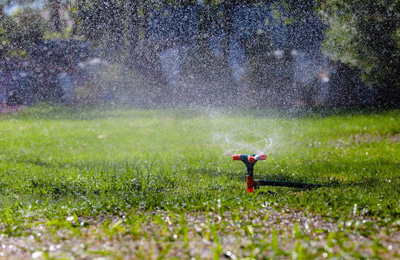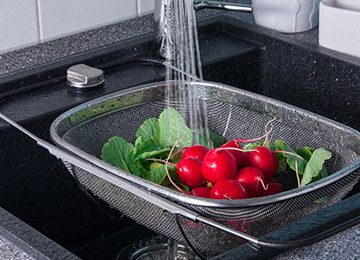Before starting the pump, fill the pump and inlet pipe with water. When the impeller rotates fast, the liquid in the impeller is also rotated by the impeller in the impeller, so that the liquid obtains centrifugal force, and moves outward from the center of the impeller along the blade flow path, and then is thrown from the end of the blade Out of the volute or diffuser (or guide wheel) in the pump casing. When the liquid flows into the diffuser, the cross-sectional area of the flow gradually expands, and the flow rate slows down. Part of the kinetic energy is converted into a static energy head, which causes the pressure to rise and finally presses out from the discharge pipe. At the same time, a partial vacuum is generated at the center of the impeller because the liquid is thrown out, so the liquid in the suction tank is continuously drawn into the pump from the suction pipe under the action of the liquid surface pressure. The impeller continuously rotates, continuously sending the liquid from the suction tank to a high place or a pressure vessel. In summary, the reason why the centrifugal pump can transport liquids mainly depends on the action of centrifugal force, so it is called a centrifugal pump.
Characteristics of centrifugal pump:
1. Air binding phenomenon: When the centrifugal pump is started, if there is no filling liquid in the pump or the filling liquid is not full, there will be air in the pump casing. Due to the low air density, the centrifugal force generated after rotation is small, resulting in the formation of the central area of the impeller The low pressure is not enough to suck the liquid in the storage tank into the pump, even if the centrifugal pump is started, the liquid cannot be transferred. This phenomenon is called air binding, which means that the centrifugal pump has no self-priming ability, so it must be filled with liquid before starting.
2. Cavitation phenomenon: When the centrifugal pump is in operation, if the partial area of its overflow part (usually somewhere behind the impeller blade inlet) is for some reason, the pressure of the pumped liquid is reduced to the vaporization pressure of the liquid at the current temperature At this time, the liquid begins to vaporize at this place, generating a large amount of steam, forming bubbles. When the liquid containing a large number of bubbles passes through the high-pressure area in the impeller, the high-pressure liquid around the bubbles causes the bubbles to shrink sharply and burst. While the bubbles are condensing and breaking, the liquid particles fill the cavities at a very high speed, generating a strong water hammer effect at this instant, and striking the metal surface with a high impact frequency. The impact stress can reach hundreds to thousands of atmospheres. , The impact frequency can reach tens of thousands of times per second, continuously hitting the impeller and other components, making the surface of the honeycomb or sponge-like, the wall thickness will break down in severe cases, causing noise and vibration in the centrifugal pump, in severe cases, centrifugal The flow, pressure head and efficiency of the pump have dropped significantly.
What are the characteristics of centrifugal pumps?




